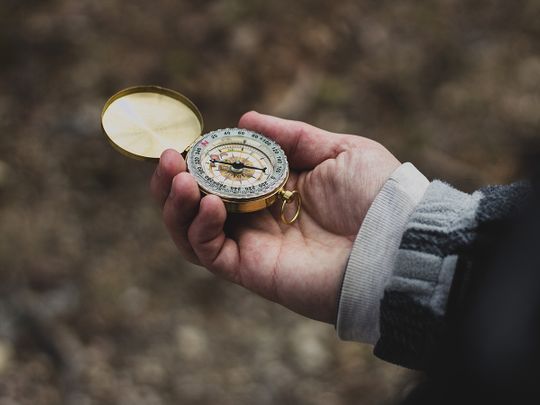
Do you sometimes feel you’d get completely lost if you didn’t use Google Maps or any other navigational app?
Click start to play today’s Word Search, where once, people used an ‘astrolabe’ or a ‘sextant’ to find their way.
Long before digital maps, people navigated through sheer observation. The earliest methods involved observing landmarks, or watching the direction of the sun and stars. The ancient Minoans, for instance, who lived on Crete (in modern-day Greece) from 3000 to 1000 BC, left behind records of how they used constellations to orient themselves.
In some cases, the skill of navigation was crucial not just for successfully getting to one’s destination, but for survival, as well.
According to a report in the National Geographic, one of the most remarkable feats of navigation in history occurred in 1789. The crew of the British ship Bounty mutinied against their leader, Lieutenant William Bligh. They left Bligh and 18 of his loyal crew members adrift in the South Pacific, in a seven-metre-long boat. The group had food and water to last just a few days, along with four cutlasses, a sextant and a pocket watch.
Without a compass or navigational charts, they had a bleak chance of survival. Remarkably, Bligh successfully navigated more than 6,500km to the island of Timor, in 47 days, fending off starvation and enemy vessels.
Another inspiring story of successful navigation comes from Antarctica, and the intrepid Irish explorer Ernest Shackleton. He attempted to be the first person to cross the mysterious, icy continent in 1915. However, Shackleton’s ship, Endurance, became grounded by the ice right after he arrived the in Weddell Sea.
However, the crew was able to get off the ship and manually haul two lifeboats over many kilometres of ice. When they finally reached open water, they sailed to Elephant Island, where they lived under the inverted lifeboats for months. It became clear, after a while, that no one was coming to rescue them.
Shackleton made a decision – he and five others took one of the lifeboats and attempted to sail 1,287km to the South Shetland Islands. All he had to help him navigate was a sextant – a device that uses the angle between the sun (or star) and the horizon to calculate the latitude. Crucially, if Shackleton made a single error with the angle, his group of companions, along with those he left behind on Elephant Island, would undoubtedly die. The South Shetland Islands were his last hope – there was no land downwind for another 8,047km. He couldn’t make a mistake.
So, he didn’t. Thanks to Shackleton’s exceptional navigational skills, his crew reached the Islands in five days and finally found help. After four attempts, they made it back to Elephant Island, with supplies and rescue personnel. Despite the ordeal, Shackleton made it back with his entire crew alive and well.
Do you think you could navigate without a map? Play today’s Word Search and tell us at games@gulfnews.com.





